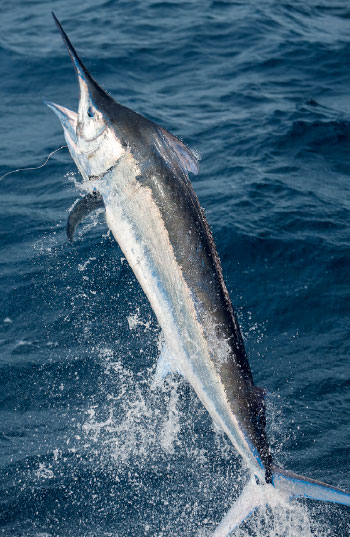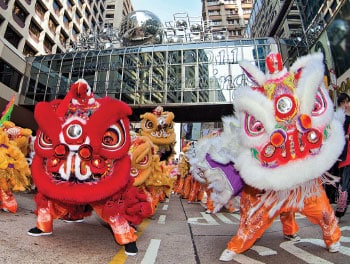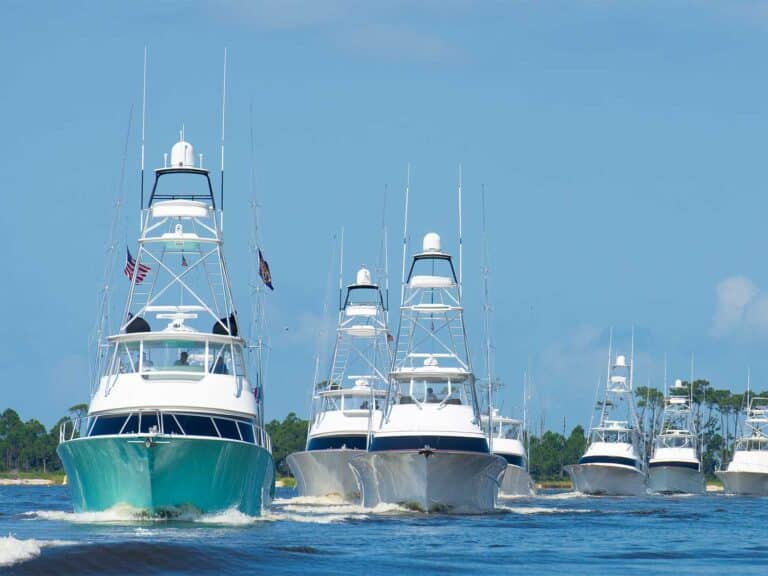
| |(Hong Kong Tourism Board)|
Our memories of fishing Hong Kong waters date back to 1990, when we were first introduced to the inimitably festive Mandarin Sportfishing Club, a multinational group of avid anglers (Australians, Americans, Chinese, English) living in what was then still a British colonial outpost precariously perched at the southern edge of an economically emerging China.
Two years later, we traveled to Hong Kong again to join that intrepid group of pioneering fishermen on one of their early exploratory tournament forays into the typhoon-ridden South China Sea, off Pratas Reef. Two hundred miles southeast of Hong Kong, Pratas was — and still is — a hotly contested, though uninhabited, group of shipwreck-strewn atolls, held by Taiwan but also claimed by China and Vietnam. In that instance, though the government in Taipei had undertaken to lend assistance to the Mandarins in case of emergency, its trigger-happy and isolated garrison on Pratas somehow had never gotten word of that promise. Quite the contrary, for no sooner had the tournament’s mothership — a state-of-the-art oceangoing salvage tug — dropped anchor off the reef after a 12-hour journey than it (and we) was fired upon for its efforts. With mortar shells scoring near misses all around us, we had to up-anchor and literally run for our lives, ultimately taking refuge at a more distant point on the reef, out of range of the garrison’s guns. To add insult to injury, only one small marlin was caught in the three days we fished.

| |Hong Kong’s juvenile black marlin are thought to become the giants of Australia. (Dave Ferrell)|
This past December, after an absence of 20 years, we visited Hong Kong once again, yet experienced a very different situation. Now, of course, the place belongs to China, but as a “special administrative region,” Hong Kong retains a degree of economic and even political autonomy from the Chinese government. The result is a city that one expat aptly described as “New York on speed,” meaning that Hong Kong is so hyperactive, with its construction of towering high-rise buildings and its ultraefficient transportation network and other such infrastructure — high-speed escalators and moving-sidewalk “travelators” everywhere — and so intense (or so manic) that it seems as if the entire place is on amphetamines. New York looks dilapidated, almost quaint, by comparison.
Yet despite the frenzied urbanism of the city itself, the Mandarin Sportfishing Club managed to survive, and better yet, its current generation of members say that over the years, the big-game fishing situation in Hong Kong has actually improved. Its waters are now recognized as a playground, if perhaps not a breeding ground, for juvenile black marlin and sailfish, among numerous other pelagic species. But Vergil Lau, owner of Hong Kong’s legendary Po Kee Fishing Tackle shop, a family-run business since 1933, says that there’s an ironic catch to the situation (no pun intended). “In the old days of the club, all of its members — airline pilots, businesspeople, accountants, whatever — were happy to put aside time for leisure activities. But since the Chinese took over [sovereignty] in 1997,” Lau says, “people’s attitudes have changed. Nowadays, nobody seems to have time anymore to fish,” he laments. “Everybody’s focused exclusively on working, on earning a living.”
Lau’s sentiments were echoed by another very personable member of the club, Philip Yung, a prominent chartered accountant in the Hong Kong community and one of its two IGFA representatives (the other being airline captain Kim Stuart, who also skippers Hong Kong’s only game-fishing charter-boat operation).
“In the old days,” Yung says, referring to the early ’90s, when we had last been there, “though people devoted more time to going out trolling, for the most part they were willing to go out on a hit-or-miss basis. Nowadays, thanks to satellites and GPS, and the constant gathering of information and sharing of knowledge, we’ve made things far more predictable. We know now that the marlin and the sailfish feed close by, five to 10 miles off the southern tip of Hong Kong, right off the Lema Islands. Further out is not so good. We certainly don’t have to go out to Pratas anymore,” he says. “So for the very little time we now devote to recreational fishing, at least we’ve made it far more efficient.”
Yung says that the Mandarins now have about 30 members, with five fishable boats among them, ranging from small center-consoles to 30- to 45-foot sport-fishermen. One of the members, with whom we unfortunately didn’t manage to speak, is the Hong Kong-based American Thomas Gorman, a saltwater fly-fisherman who occasionally writes for online publications, such as the Global FlyFisher. Catch-and-release is the name of everyone’s game, so no official catch records are kept.
The marlin here average between 100 and 200 pounds. To our knowledge, it’s not been scientifically substantiated, but some people suggest that these juveniles eventually end up in Australia as the giant blacks of the Great Barrier Reef. Not surprisingly, they frequent Hong Kong waters in the summer months, when the water temperature is far warmer.
For a change of pace once you’re in Hong Kong, be sure to pay a visit to the city’s two most illustrious tackle shops, where Vergil Lau and Michael Chow hold court. Both of them are delightfully forthcoming fishermen. Lau, incidentally, is currently actively involved in a major campaign to get the government to build a new public marina in Hong Kong’s Tolo Harbour to provide additional affordable mooring space for recreational boaters. And if you have any days off, you may also want to acquaint yourself with a bygone era by taking a local bus or ferry to the old fishing villages of Shek-O and Tai-O. If, on the other hand, you want to get an ultramodern look at drinks-on-the-beach Florida-style living transplanted to Hong Kong, take a ferry one evening to Discovery Bay.
But most important of all, especially in the summer months, be sure to contact charter-boat captain (and IGFA representative) Kim Stuart, who skippers a 46-foot Bertram, and have a light-tackle go at the marlin off Lema Island.
| # Getting There |

For Marlin readers who travel to Hong Kong on business, as many surely will in the months and years to come, given the city’s extraordinarily booming economy, any number of airlines offer daily nonstop flights from the East or West Coast and Chicago, as well as from most European hub cities. If you’re being hosted by a Hong Kong-based business associate who is a member of one or more of Hong Kong’s extraordinary clubs — or if you happen to belong to a club at home that has reciprocity rights — be sure to visit as many of those clubs as possible. Overlooking the entire city and providing spectacular views of Victoria Harbour, the American Club also offers some of the best (Western) food in town, while the Foreign Correspondents Club features a pub where the party never seems to end. And though you’ll find few fishermen hanging around the bar at the Yacht Club these days, it’s also well worth a visit. Some of our old-time favorite Chinese restaurants proved terribly disappointing during our last visit, but for the best of southern Chinese cuisine, we recommend the Victoria City restaurant at Crowne Plaza in Causeway Bay, an easy stroll from both the Hong Kong Convention and Exhibition Centre and the Grand Hyatt Hotel. It’s extremely popular, however, so make reservations early.CONTACTS (Photo – Hong Kong Tourism Board)| |Vergil Lau PoKee Fishing Tackle Co. Ltd. 1 Floor, 6 Hillier Street Sheung Wan, Hong Kong 852-2544-1035| Michael ChowWorld Fishing Centre (Daiwa Shop) G/F 54 Jordan Road Jordan, Kowloon 852-2302-0078| Kim Stuart852-9122-0695 [email protected]|







